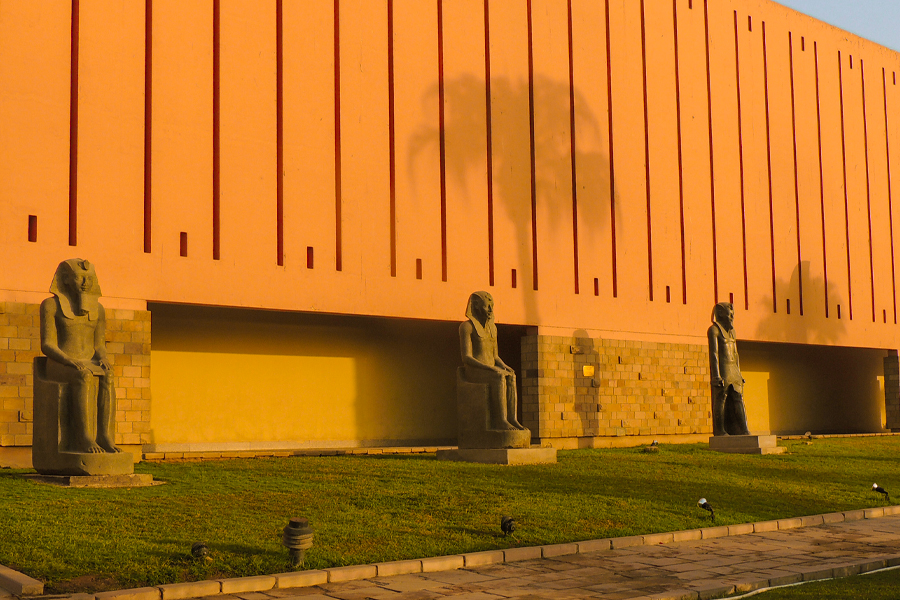In 1962, the Egyptian Ministry of Culture decided that a new museum was needed to display treasures found during excavations near where they were found. The famous Egyptian architect Mahmoud Al-Hakim built a new building on the bank of the Nile between Luxor Temple and Karnak Temple, and beautiful scenery surrounds this building.
Information about Luxor Museum:
The exhibits of the new museum were carefully assembled over several years. The curators paid special attention to the ancient works of art that adorn the streets and temples of the ancient capital of Thebes. During the show, locals also found high-quality antiquities. For example, the colossal statue of Pharaoh Mentuhotep III, rightfully considered one of the best pieces in the museum, was discovered when a house was being built in the nearby city of Armant.
All major expeditions were examined around Luxor, with warehouses or storage rooms. Some antiquities found their way home after being displayed and stored in the Cairo Museum. Since it opened to the public in 1975, those interested in early Christian and ancient Egyptian art have begun to see it. It is difficult to determine the best among the most exciting exhibits.
Perhaps it is worth considering the sculptures of the pharaoh Amenhotep III and the Nile god holding the crocodile head, Sebek, made of creamy yellow alabaster, and the temple near Thebes in Daham. An earthquake in ancient times destroyed it, but its rich colors remained the same. Or think of the reliefs from the Temple of Thutmose III at Deir el-Bahari, which…
When important objects were found in Tutankhamun’s tomb, they were added to the museum’s collection. Several hundred golden rosettes were sewn onto the burial canopy that was used to cover the coffins of the young pharaoh. There were copies of boats used at royal funerals and statues of ushabti, servants in the afterlife.
On the screen, new information is always added. In 1989, when the corridors of Luxor Temple were repaired, workers found a room under the temple’s floor. The cave had unique statues of pharaohs and deities from the New Kingdom. The museum’s collection of artifacts increased, and soon a new hall was built to accommodate the most interesting of them. In the “Luxor Hideout” hall, visitors can see statues of the pharaoh Horemheb bowing to the evening sun god Atum, cult figures of the goddess Hathor and Yonet sitting on their thrones, and the little sphinx of Tutankhamun.
During the reign of Pharaoh Amenhotep III, quartzite was used to make a statue of him as the god Amon Kamotev, who appears as a giant serpent. During his lifetime, people believed that Amenhotep III was a god. It was built of diorite sometime in the 7th century. During this time, a beautiful alabaster statue of the goddess Mut was carved. It was made during the reign of Ramses II and is known for its meticulous detailing and accuracy. This statue was built during the reign of Ramses II.
A colossal granite statue of Amenhotep III was found in his tomb on the western side of the Nile. His head was immediately placed at the entrance to the museum’s main halls filled with rare artifacts. When they get there, Amenhotep III greets them with a warm smile.
The evening is the best time to go to the museum. The modern Luxor fuss seemed to fade away, and instead, a fantastic conversation between people of different ages began to take shape. The things we talk about are based on the timeless truths of ancient wisdom and the timeless beauty of Egyptian art.


0 Comment